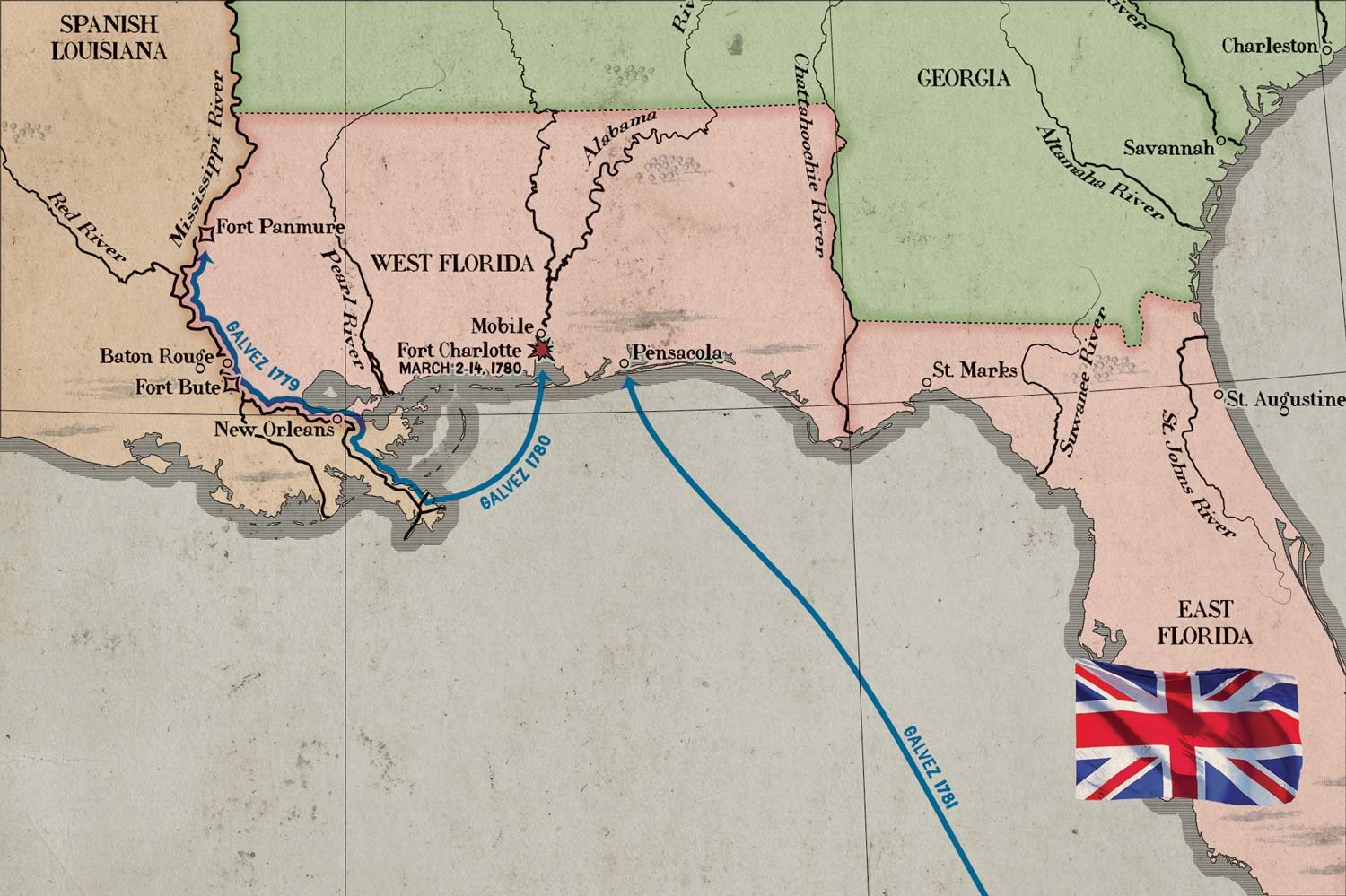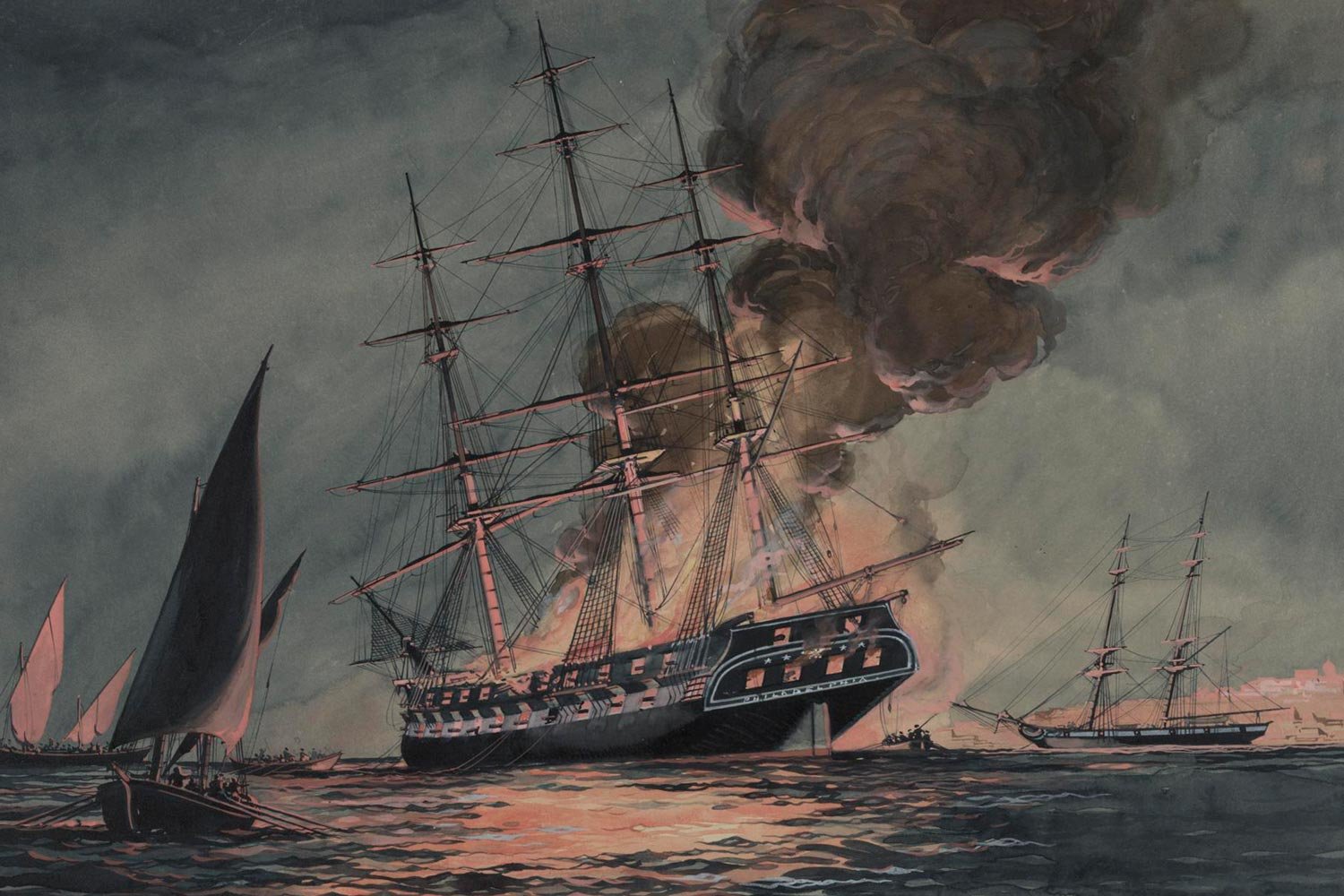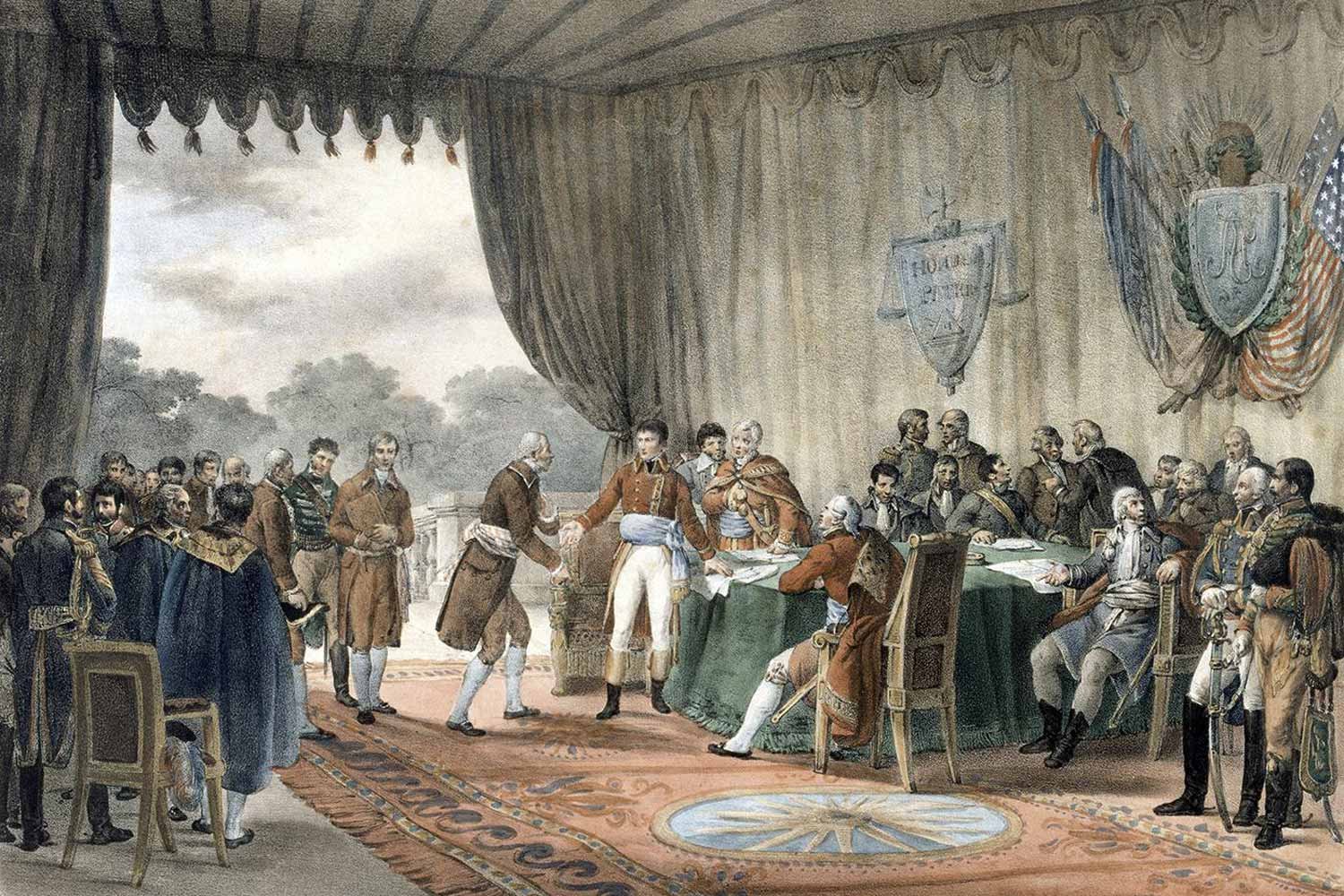Spain Recaptures Florida
Because of Spain’s numerous possessions along the Gulf Coast and in Central America, France and Spain jointly decided to have Spain fight the British throughout the southern theater and in the Mediterranean, while France would send their soldiers and navy to help the thirteen American colonies. It is the reason why the French were at Newport, Savannah, and Yorktown while Spanish soldiers were not, leaving the mistaken impression in most American’s minds that France was our only ally in the American Revolution.
Between 1779 and 1782, Spain pressed the British in such disparate places as Gibraltar, Minorca (an island in the Mediterranean), Central America, the Bahamas, and Florida. And, most importantly to England, Spain and France had over 60 ships-of-the-line in harbors just across the English Channel just waiting for the right opportunity to invade Britain’s home islands. Consequently, dozens of British warships and numerous regiments of British regulars were held at home or sent to defend these areas instead of to the thirteen American colonies as reinforcements for Sir Henry Clinton’s dwindling army.
Strategically for the United States, the two key areas outside the thirteen American colonies were the Mississippi River Valley and British held Florida on the country’s southern flank. Fortunately for us, those territories were a priority for Spain as well. Beginning in the late summer of 1779, Bernardo de Galvez, the Governor of Spanish Louisiana based in New Orleans, initiated an aggressive campaign against British outposts in the Mississippi River Valley and the Gulf Coast that would expel the British from America’s western and southern borders.
“Portrait of Bernardo de Gálvez.” Wikimedia.
On September 7, 1779, Galvez moved north to capture Fort Bute on Bayou Manchac and followed that up with the capture of Baton Rouge two weeks later. Then, on October 5, Galvez successfully attacked Fort Panmure at Natchez along the banks of the Mississippi. In less than a month, Galvez’s troops killed, wounded, or captured 500 British soldiers and removed all British garrisons from the lower Mississippi River Valley.
Galvez then turned his sights on the Gulf Coast and the two British strongholds of Mobile Bay and Pensacola. Sailing from New Orleans in late winter 1780, Spanish troops laid siege to Fort Charlotte outside Mobile Bay and forced its surrender on March 14, 1780. Later that year, Galvez led 4,000 men and a 63-ship flotilla against the final British possession in West Florida, the strategic port of Pensacola from which British ships controlled access to the Gulf of Mexico through the Bahama Channel. But Mother Nature apparently favored the Brits at that point as the armada was scattered by a terrific four-day hurricane.
Never one to accept defeat, Galvez returned to Pensacola the following spring and, on May 10, 1781, after a two-month siege, forced British General John Campbell, a tough Scotsman, to surrender Fort George and the port of Pensacola along with over 1,100 British soldiers. Almost singlehandedly, Bernardo de Galvez removed the British from West Florida and weakened the British position so much so that England was forced to also relinquish East Florida as part of the negotiations to end the war.
Without Spain’s recapture of Florida, this important territory on America’s southern flank probably would have been retained by the British in the Treaty of Paris. England would have then bracketed the United States between Canada in the north and Florida to the south. There is little reason to think that England would have ever given up Florida any more than they would give up Canada. American diplomats could never have coerced Parliament and the powerful British empire to relinquish this area as they forced a weakened Spain to do in 1819 with the Adams-Onis Treaty.
For two centuries, from the early 1700s to World War I, the matchless British navy controlled the high seas and thereby controlled its vast world-wide empire. The only exception to this monopoly of naval supremacy came in one brief window from 1779, when Spain entered the war, to 1783 when Treaty of Paris concluded it. That this period coincided with our war for independence was fortunate in the extreme for the American colonies as England’s navy, its greatest asset, was temporarily blunted.
Had Spain not joined the conflict and wrested control of the high seas from the virtually invincible British navy and had England not been forced to expend its resources in countless battles on many fronts against Spain, American independence may not have happened for decades. Moreover, the shape that our nation took when it did happen would probably be markedly different than what we know today.
Although the post-war relationship between the United States and Spain splintered apart as the two countries fought over Florida, Texas, and California, Spain was a great helpmate during our fight against England. While fully recognizing the significant role France played in achieving our country’s independence, one could argue that Spain was the real difference maker in the American Revolution.
Next week, we will discuss the Penobscot Expedition of 1779. Until then, may your motto be “Ducit Amor Patriae,” love of country leads me.












Commodore Edward Preble assembled his considerable American fleet just outside Tripoli harbor in August 1804, determined to punish the city and its corsairs, and force Yusuf Karamanli, the Dey of Tripoli, to sue for peace.